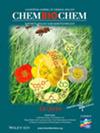SnO2 encapsulated in alginate matrix: Evaluation and optimization of bioinspired nanoadsorbents for azo dye removal
IF 2.6
4区 生物学
Q3 BIOCHEMISTRY & MOLECULAR BIOLOGY
引用次数: 0
Abstract
Synthesized SnO2 NPs demonstrate potential capacity to adsorb toxic azo dye. Powder X-ray diffraction and SEM imaging confirmed the rutile phase and spherical morphology of SnO2 NPs. Average particle size has been confirmed to be approximately 3 nm through TEM analysis. Adsorption capacity is attributed to the high surface and presence of oxygen vacancy confirmed through BET and XPS, respectively. To mitigate the leaching of NPs in treated water, the encapsulation of NPs in sodium alginate (SA) has been proposed as an environmentally friendly, biocompatible, and economic solution. This study specifically focuses on investigating the parameters for the encapsulation of NPs within a sodium alginate matrix using CaCl2 as cross-linker, including effect of physical shape of encapsulation, effect of sodium alginate and CaCl2 concentration on the encapsulation efficiency and overall adsorption efficiency. Experimental results indicated that the physical form of encapsulation, such as spherical, wire-like, or irregular shape maintained consistent adsorption efficiency, which indicates its versatility. For effective encapsulation of NPs and adsorption, SA and CaCl2 concentration are suggested to be within the range of 0.2-0.3 g and > 0.5 M, respectively..藻酸盐基质中封装的二氧化硒:评估和优化用于去除偶氮染料的生物纳米吸附剂
合成的二氧化锡氮氧化物具有吸附有毒偶氮染料的潜在能力。粉末 X 射线衍射和扫描电镜成像证实了 SnO2 NPs 的金红石相和球形形态。通过 TEM 分析,确认平均粒径约为 3 nm。BET 和 XPS 分别证实了高表面积和氧空位的存在,从而提高了吸附能力。为了减轻 NPs 在处理过的水中的沥滤,有人提出将 NPs 封装在海藻酸钠(SA)中,这是一种环保、生物兼容且经济的解决方案。本研究主要探讨了以 CaCl2 为交联剂将 NPs 包裹在海藻酸钠基质中的参数,包括包裹的物理形状、海藻酸钠和 CaCl2 浓度对包裹效率和整体吸附效率的影响。实验结果表明,球形、线状或不规则形等物理封装形式都能保持稳定的吸附效率,这表明其具有多功能性。为了使 NPs 得到有效的封装和吸附,建议 SA 和 CaCl2 的浓度分别在 0.2-0.3 g 和 > 0.5 M 的范围内。
本文章由计算机程序翻译,如有差异,请以英文原文为准。
求助全文
约1分钟内获得全文
求助全文
来源期刊

ChemBioChem
生物-生化与分子生物学
CiteScore
6.10
自引率
3.10%
发文量
407
审稿时长
1 months
期刊介绍:
ChemBioChem (Impact Factor 2018: 2.641) publishes important breakthroughs across all areas at the interface of chemistry and biology, including the fields of chemical biology, bioorganic chemistry, bioinorganic chemistry, synthetic biology, biocatalysis, bionanotechnology, and biomaterials. It is published on behalf of Chemistry Europe, an association of 16 European chemical societies, and supported by the Asian Chemical Editorial Society (ACES).
 求助内容:
求助内容: 应助结果提醒方式:
应助结果提醒方式:


